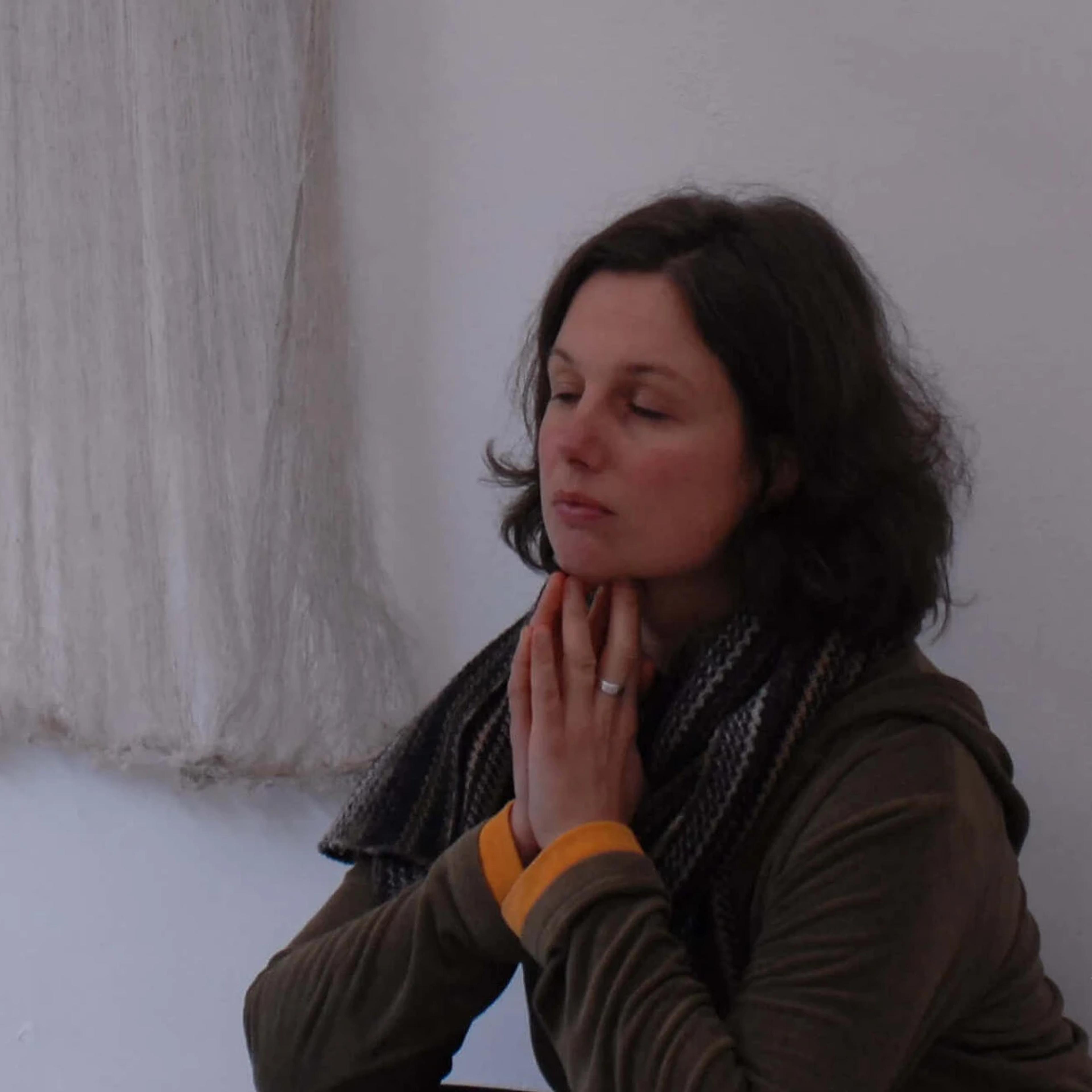Conversation
Ruth Wiesenfeld
"I am interested in the very origin, the root of a creative utterance."

Ruth Wiesenfeld‘s artistic language wanders between musical composition, performance and visual art. Wiesenfeld explores unconventional and experimental forms of notation, sculptural objects, installations and videos.
In 2020, she launched TOWARDS SOUND, a network, archive and series of events rendering sonic imagination tangible. Her works have been presented in Academy of the Arts Berlin, Radialsystem Berlin, International Sound Art Festival Berlin, Royal College of Music in London and Kunstfest Weimar. Sasha Waltz created a choreography to Wiesenfeld‘s string quartet Hautfelder, then part of DIALOGE 09 and Métamorphoses by Sasha Waltz & Guests. Curations include A Blink from Sonic Eyes, re:future lab, Berlin (2021).
MADELEINE SCHWINGE: Can art foster social change, and what role can artists and their work play in this? More in depth, can they take a leading role?
RUTH WIESENFELD: Yes, I believe artists – in either a leading or any other role - and their works are capable of fostering social change, yet the trajectory may not always be a linear, planned out, intended one.
How do we know where exactly any kind of change has begun, which one of all the necessary micro-events that lead up to perceptible change provided the initial spark? I remember an astonishing moment that occurred after a rehearsal of my orchestral piece Spun Yarn: after having rehearsed this piece and taking a break the members of the orchestra returned to their deks, ready for the beginning of Brahms 1st Symphony. Yet to everybody’s surprise a precise joint entry following the conductor’s baton seemed impossible. What had happened?
In Spun Yarn I aimed at rendering the listening itself audible – a listening to what is coming about in the present moment, considering sound as an extension of one’s physical being in a state of highest perceptiveness. I assumed that if the musicians are able to listen to what emerges in the present moment as an overall sound, instead of striving for an ideal ensemble and in doing so remain aware of the physical and sensorial aspects of their playing, the orchestra would consist of individuals rather than of a mass of players. In Spun Yarn there is no fixed duration for most of the sonic events, instead either the players or the conductor decide to move on or to enter whenever the moment seems right. The performers have to take responsibility for the final shape of the piece and thus need to listen and to respond to each other very carefully.
The intense practice of this specific quality of listening made it very hard for the musicians to switch back to their habitual way of functioning as a sounding body, focused mainly on the conductor and the determined sounding result. Might this experience have layed the ground for social change in any scale? I would definitely hope so, even if this potential effect was not the one that inspired this piece in the first place.
MS: In a time of radical upheaval and crisis, can we still hope for a better future? What impact can narrative have on the process of building such a future?
RW: I would not have become a mother, if I didn’t hope for a better future! I think we urgently need to look at existing narratives and make sure that the ones that circulate are the ones we want and regard as useful in building a better future. Narratives have a strong impact, which needs to be questioned in all its facets in order to avoid passing on obsolete contents.
MS: What could be the premises of a transdisciplinary dialogue (between art, culture and other disciplines) capable of triggering a social transformation? In your own work, what expertise or practices could go in the direction of such transdisciplinarity?
RW: The premises could be encounters that carefully explore possible links between spheres of knowledge and activities, yet simultaneously respect each other’s limits and expertise.
My work both as an artist and curator is transdisciplinary per se as I am genuinely interested in the very origin, the root of a creative utterance. I think my expertise is the creative process itself in all its various stages and forms of appearance. Leaving the artistic realm I can see the possibility of a dialogue with all disciplines that focus on perception, personal development, care giving and education.
MS: Assuming it is possible to build a better world on the ruins of the old one, what might it look like? What would you hope for in a better world?
RW: Aside from all the obvious transformations that are urgently needed, I would hope for an improvement in the quality of encounters, dialogues, relationships. I would hope for genuine, purpose-free interest - in the true sense of inter-esse - in the other. I would hope for openness, curiosity and empathy within each single encounter that occurs, be it with another human, an animal or nature.
MS: It is often said that artists (and creative people at large) have a unique ability to constantly search for the new, starting from scratch again and again, relentlessly. What strategies or rituals do you use when you start a new project?
RW: I turn quiet and wait - until the essence of my impulse for a new project crystallizes. Then I wait again – for an impulse in response to that essence that feels immediate enough to be put in action. A lot of waiting that implies letting go of impulses that emerge, yet do not have the urgency to elicit a response.
Front Photo. © Ruth Wiesenfeld